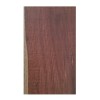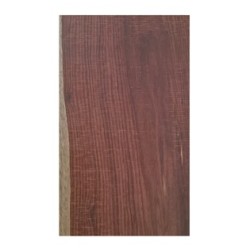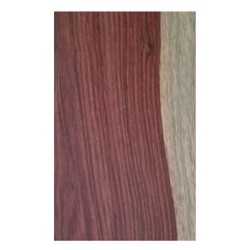Amazon Rosewood

Family: Fabaceae - Order: Fabales - Class: Magnoliopsida
Scientific name: Dalbergia spruceana.
Trade name: Palissandre Para / Amazon Rosewood
Also known as Saboarana (Brazil); Jacarandá-Pedra
(Brazil); Jacarandá-Da-Caatinga (Brazil); Jacamin (Brazil)
Origin: Brazil
Instrumental uses:
Guitar back and sides,
fingerboards, bridges, head plates, bindings, peg heads, turnery and woodwind
parts.
Tonal properties:
Amazon Rosewood is a superior tone wood with a great
look and acoustic properties. Very responsive, highly dynamic, very good
separation of notes, slightly more pronounced on basses than the mids and
trebles. Amazon Rosewood is perhaps the closest replacement of Brazilian
Rosewood, generally they are very similar sharing the same great visual and
acoustic properties. Amazon Rosewood has equally a balanced warm sound with
full round basses and crystal trebles, however due to the higher density the
notes tend to come out more clear piano-like with great separation of voices.
One of the few differences is
precisely the higher density compared with its cousin Brazilian Rosewood;
people normally distinguish it by the light rose-like scent and by the slight
different appearance. This species of tree is small, so it is difficult to get
quarter sawn backs. It is not an endangered species yet, however today Amazon
rosewood is rare and has become difficult to acquire.
Due to
its density it can be as difficult to work as other rosewoods like Cocobolo but
it turns and finishes well and can be polished to a high natural lustre.
Average dried weight Density: 68 lbs/ft3 (1085
kg/m3)
This
rosewood is a small to medium size tree. It grows in the Amazonas and Para
states, also in Amapa and Rondonia. It tends to be orange or reddish brown with
darker contrasting streaks while the sapwood is lighter yellowish clearly
demarcated from the heartwood.
CITES
status is protected under the Appendix II. Is not reported on the IUCN Red
List.
Gallery Photos




